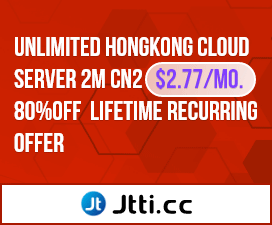- Joined
- Apr 11, 2017
- Messages
- 220
- Points
- 18
If you care about how fast your website loads, especially for mobile users or international visitors, it’s time to stop ignoring HTTP/3 and QUIC. This isn’t some future feature: it’s live, stable, and quietly being used by most major platforms. The good news? You don’t need to be a sysadmin to take advantage of it.
What’s Actually New Here?
How You Can Use It
If you’re not managing your own VPS, the easiest and most effective path is through a CDN that supports HTTP/3 and QUIC. And no, this doesn’t require a developer.
Here’s how:
Unless you know how to compile nginx forks from source, this route isn’t worth it right now. Official support for Apache and standard nginx is either unstable or still experimental in most builds. You’ll spend hours patching things, only to get a performance gain you could’ve had in minutes with a CDN.
If you do want to go self-managed, use a reverse proxy setup with Cloudflare or another CDN in front of your server. That way, you get HTTP/3 benefits without touching your backend.
Does It Help?
Yes — especially for mobile users, people on 3G/4G networks, and visitors connecting from far-off regions. You’ll also notice more stable performance during traffic spikes. It’s not just about speed scores — it’s about real load experience.
And while HTTP/3 won’t fix bloated themes or lazy coding, it gives your site a much better starting line.
Real-World Watchouts
HTTP/3 + QUIC solves actual problems: slow start times, flaky mobile connections, and outdated server behavior. You don’t need to overhaul your whole stack, but put the right delivery layer in place.
What’s Actually New Here?
- HTTP/3 is the latest version of the protocol that handles loading your site.
- Unlike HTTP/1.1 and HTTP/2, it doesn’t rely on TCP — it uses QUIC, which is faster, more reliable, and designed for today’s internet (not the dial-up era).
- QUIC maintains stable connections even when networks drop out or users switch from Wi-Fi to mobile.
- It also encrypts everything by default and loads multiple parts of your site at once without stalling.
How You Can Use It
If you’re not managing your own VPS, the easiest and most effective path is through a CDN that supports HTTP/3 and QUIC. And no, this doesn’t require a developer.
Here’s how:
- Use a CDN — like Cloudflare, Bunny.net, or Fastly. These are the real-world options where HTTP/3 is tested and deployed at scale.
- Sign up, connect your domain, and toggle HTTP/3 on (usually found under network or performance settings).
- Purge your cache and test — tools like http3check.net or Chrome DevTools (check the 'Protocol' column) will show if HTTP/3 is in use.
What If You’re Hosting It Yourself?Tip: On Cloudflare, HTTP/3 is often enabled by default — but check anyway under Network → HTTP/3 (with QUIC).
Unless you know how to compile nginx forks from source, this route isn’t worth it right now. Official support for Apache and standard nginx is either unstable or still experimental in most builds. You’ll spend hours patching things, only to get a performance gain you could’ve had in minutes with a CDN.
If you do want to go self-managed, use a reverse proxy setup with Cloudflare or another CDN in front of your server. That way, you get HTTP/3 benefits without touching your backend.
Does It Help?
Yes — especially for mobile users, people on 3G/4G networks, and visitors connecting from far-off regions. You’ll also notice more stable performance during traffic spikes. It’s not just about speed scores — it’s about real load experience.
And while HTTP/3 won’t fix bloated themes or lazy coding, it gives your site a much better starting line.
Real-World Watchouts
- Not every browser supports HTTP/3 yet, so you still need HTTP/2 as a fallback.
- Some shared hosts advertise HTTP/3 but don’t implement it — test before you trust.
- CDNs can sometimes misreport protocol usage. Use multiple test tools to verify (not just Google’s PageSpeed).
HTTP/3 + QUIC solves actual problems: slow start times, flaky mobile connections, and outdated server behavior. You don’t need to overhaul your whole stack, but put the right delivery layer in place.








